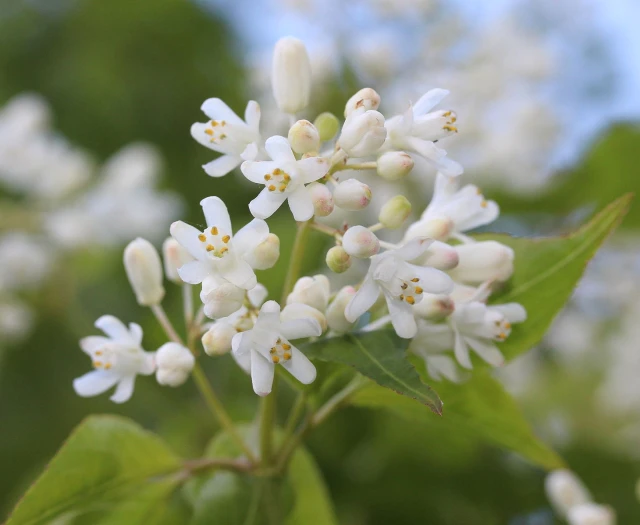Japanese Bladdernut
(Staphylea bumalda)
Japanese Bladdernut (Staphylea bumalda)
/
/

Alpsdake
CC BY-SA 3.0
Image By:
Alpsdake
Recorded By:
Copyright:
CC BY-SA 3.0
Copyright Notice:
Photo by: Alpsdake | License Type: CC BY-SA 3.0 | License URL: http://creativecommons.org/publicdomain/zero/1.0/deed.en | Uploader: Alpsdake | Publisher: Wikimedia Commons |

























Estimated Native Range
Climate Requirements for Laredo, Texas
| This Plant | Your Site | Plant Suitability for Your Location | ||
|---|---|---|---|---|
| • Precipitation | 18" - 127" | 19" | Your precipitation may be insufficient for this plant. Irrigate N" / year. | Irrigate N" / year |
| • High Temp. | 64°F - 93°F | 100°F | Your summers may be too hot for this plant. | Too hot |
| • Low Temp. | -14°F - 39°F | 44°F | OK, but your winter temperatures are warmer than normal for this plant | OK |
This plant should grow well at your location with about N inches per year (Y minutes per month) of irrigation.
Summary
Staphylea bumalda, commonly known as Japanese Bladdernut, is a deciduous shrub native to woodland margins and forested areas in East Asia, including Japan, Korea, and parts of China. It typically grows to a height and width of 4-6 feet (1.2-1.8 meters), making it a compact choice for garden settings. The plant has a rounded form with green, pinnate leaves that turn yellow in the fall, adding seasonal interest. In spring and early summer, it produces small, bell-shaped white flowers that hang in clusters, offering a modest yet attractive display. The flowers are followed by inflated, bladder-like seed capsules that are ornamental and persist into winter.
Japanese Bladdernut is valued for its multi-season interest, including its spring flowers, yellow fall foliage, and unique seed capsules. It is suitable for use in mixed borders, woodland gardens, and as a specimen plant. This shrub is adaptable to a range of soil types, provided they are well-drained, and it can tolerate both full sun and part shade. While generally low-maintenance, it may require occasional pruning to maintain its shape and remove any dead or damaged wood.CC BY-SA 4.0
Japanese Bladdernut is valued for its multi-season interest, including its spring flowers, yellow fall foliage, and unique seed capsules. It is suitable for use in mixed borders, woodland gardens, and as a specimen plant. This shrub is adaptable to a range of soil types, provided they are well-drained, and it can tolerate both full sun and part shade. While generally low-maintenance, it may require occasional pruning to maintain its shape and remove any dead or damaged wood.CC BY-SA 4.0
Plant Description
- Plant Type: Shrub
- Height: 4-6 feet
- Width: 4-6 feet
- Growth Rate: Moderate
- Flower Color: White
- Flowering Season: Spring, Summer
- Leaf Retention: Deciduous
Growth Requirements
- Sun: Full Sun, Part Shade
- Water: Medium
- Drainage: Slow, Medium, Fast
Common Uses
Bee Garden, Border Plant, Butterfly Garden, Edible*Disclaimer: Easyscape's listed plant edibility is for informational use. Always verify the safety and proper identification of any plant before consumption., Fragrant
Natural Habitat
Woodland margins and forested areas in East Asia
Other Names
Common Names: Bladdernut, Bumald Bladdernut, Japansk Pimpernöt, 고추나무
Scientific Names: Staphylea bumalda, Staphylea francheti, Bumalda trifolia, Staphylea bumalda f. rotundifolia, Staphylea bumalda var. glabra, Staphylea bumalda var. latifolia, Staphylea bumalda var. microphylla, Staphylea bumalda var. pubescens, Staphylea bumalda var. viridis
GBIF Accepted Name: Staphylea bumalda DC.